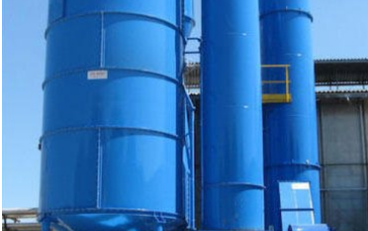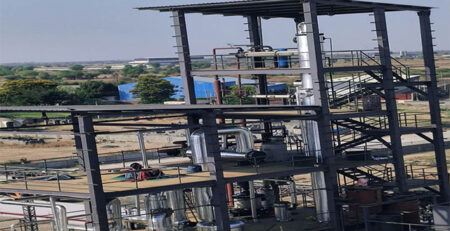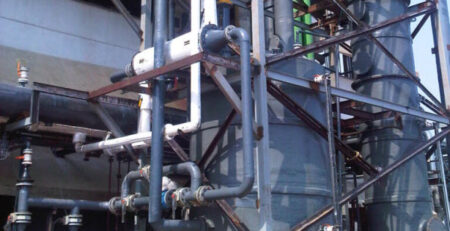Desalination Plants in Argentina Market
The global desalination plants market is a very vast industry, which is growing at an exponential rate. The market is being driven by increasing demand for clean drinking water. This demand is expected to rise in the coming years due to increasing population and changing lifestyle of people. Moreover, seawater desalination helps in reducing pressure on groundwater in intensively irrigated agricultural areas.
What is the Demand of Reverse Osmosis Plant in Argentina?
The reverse osmosis desalination plants in Argentina market is growing at a rapid pace. The region is seeing a booming population and high demands for clean drinking water. These factors are driving the market.
During the forecast period from 2023 to 2025, North America will remain the dominant regional market, but the Asia-Pacific will also grow. This growth will be driven by the rising need for potable water in China, India and Indonesia.
Another reason that the market is expanding is the increasing use of reverse osmosis membranes in wastewater recycling. Companies in this sector are using the technology for a wide range of applications. It is used in the pharmaceutical industry, as well as in manufacturing electronic parts.
Reverse osmosis desalination is an effective means of removing contaminants from unfiltered water. It can be used for the purification of drinking water, faucets and aquariums. Some reverse osmosis plants also offer energy storage.
Several countries in Latin America have reverse osmosis desalination facilities. These plants provide freshwater for industrial and agricultural purposes. In addition, some Caribbean islands have reverse osmosis plants, and some resort hotels have them.
Reverse osmosis is an effective method of removing salts and other substances from unfiltered water. However, it has significant operating costs. In fact, 55 percent of the total cost of a plant is due to the energy that is required to run the equipment.
Most reverse osmosis plants require about 3 to 10 kilowatt-hours of electricity per cubic meter of freshwater produced. Larger plants are adding renewables to their portfolios in order to increase sustainability.
What is Multi-effect Distillation Method?
Multi-effect distillation is one of the most common desalination technologies. It consists of evaporating salt water on the one side of the tube wall, and vaporizing steam on the other. This process is also used in the production of sugar and salt.
During the forecast period, seawater will dominate the global market for desalination systems. The market is expected to register a 10% CAGR over the next seven years.
A major factor contributing to the market growth is the increase in the demand from the Middle East and North Africa. There is a growing need for potable water in these regions. Moreover, rising awareness of the importance of drinking water and a decreased supply of freshwater are also driving investments in the development of desalination plants.
Although distillation processes are simple technology, they have a high energy cost. However, there are newer processes which operate at lower temperatures. Among these, thermal vapor compression distillation is being developed. In this system, vapor is extracted from the last effect of a MED cycle.
Multi-effect distillation is often employed in the Middle East. These plants are usually comprised of between eight and sixteen effects. They can handle between 0.5 and five million gallons of water per day.
Although multi-effect distillation is considered to be the most energy-intensive treatment technology, it is still widely used in the Middle East. It is the most commonly used process in the world’s desalination plants.
The increasing demand for freshwater in the Middle East is a key driving force for the market. In addition, the market is expected to benefit from technological advancements which will allow the product to acquire a wider range of downstream applications.
Seawater Desalination Reduces Pressure on Groundwater in Intensively Irrigated Agricultural Areas
Desalination is a process of removing salt from seawater and converting it to drinking water. It is a complex technology. Agricultural use of desalinated water is limited to coastal regions where the groundwater is saline. In addition, RO technologies are expensive and only available in high value coastal areas.
Irrigation is a widespread practice in many parts of the world. Especially in the Middle East and South and East Asia, irrigation is a major input factor in the increase in crop yields. But water resources are being overexploited in this region and will run out in ten to fifteen years if the current trend is not reversed.
As a result of this pressure, water quality has been severely affected. Groundwater has become polluted and there is an inadequate sanitation network. Furthermore, the extraction of nitrates has worsened the condition.
There is a need to identify the variables that encourage farmers to use desalinated seawater for irrigation. To do so, the study sought to understand the aquifer condition and the incentives that stimulate intensive use of desalinated seawater for irrigation.
Brackish Water Desalination Technology is Predicted to Witness Growth
Desalination systems are used to produce high-quality drinking water from seawater or brackish water. These facilities use membrane-based techniques to separate salts and other minerals from the water. It is a process that provides fresh water for various purposes, including industrial, residential, and agricultural.
The Argentina market for desalination systems is expected to grow at a steady rate in the coming years. This growth is due to the increasing demand for potable water and a lack of freshwater resources. Furthermore, increased investment in the industry is another factor supporting the market.
The global market for water treatment chemical technology is anticipated to see promising growth in Africa and the Middle East. Countries in these regions are facing a lack of freshwater resources, and are turning to sustainable wastewater treatment. However, lack of awareness of the water treatment industry is a potential barrier to the market.
Although many countries are implementing stringent regulations and carrying out maintenance on their industries, the demand for water treatment is likely to increase in the near future. Also, climate change is a major driver of severe droughts. In addition, a growing population and an urbanization trend are factors influencing the water treatment market. Moreover, a growing demand for freshwater in Latin America is also expected to drive the water market.
Key Players Operating in the Water Desalination Plants Market
Water Desalination Plants is a vital segment of the Argentina market, which is anticipated to grow at a rapid rate during the forecast period. Some of the key players operating in the Desalination Plants market include: Waterman Engineers Australia. The company provide various products for a variety of applications.
A major driving force behind the growth of the Desalination Plants market is the increasing demand from the Middle East and North Africa. Moreover, the increasing population in these regions will drive the need for water. Therefore, the countries in this region are investing heavily in desalination projects.
The global Water Desalination Plants market is expected to reach USD Million by 2028. By 2025, the Asia-Pacific region is likely to witness the highest growth rate, while the North America region is expected to experience the largest share.
The Bottom Line
The Desalination Plants market is dominated by the reverse osmosis technology. Compared to other technologies, this method of water desalination is relatively cost-effective. Besides, it is capable of producing freshwater at a higher rate, which is one of the primary benefits of this technique.














